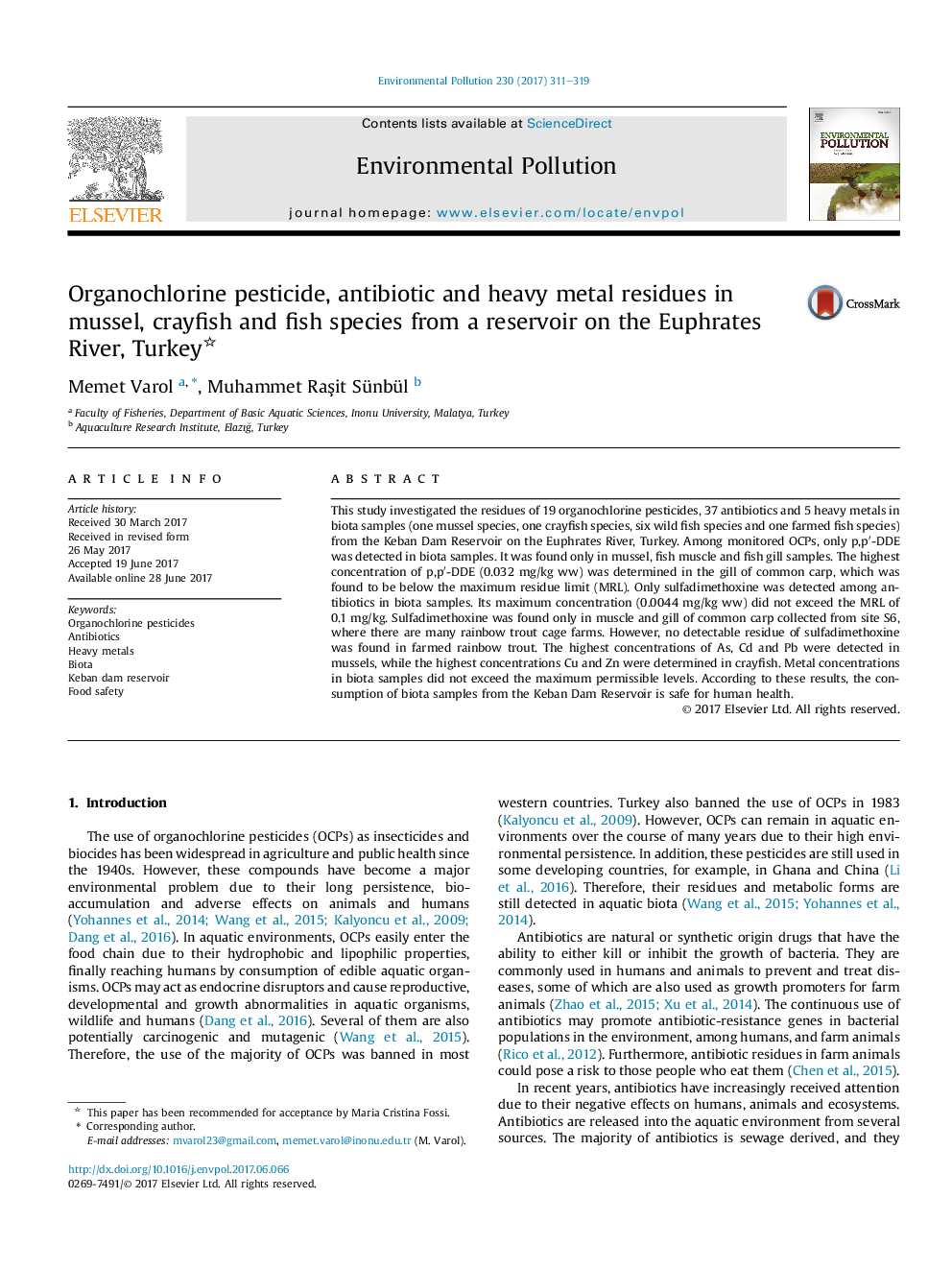| کد مقاله | کد نشریه | سال انتشار | مقاله انگلیسی | نسخه تمام متن |
|---|---|---|---|---|
| 5748676 | 1619143 | 2017 | 9 صفحه PDF | دانلود رایگان |
- 1 out of 19 OCPs was detected in mussel, Euphrates barbell, mangar and common carp.
- Only sulfadimethoxine was detected among antibiotics in muscle and gill of fish.
- Sulfadimethoxine was found in wild fish around cage fish farms.
- The highest concentrations of As, Cd and Pb were detected in mussels.
- OCP, antibiotic and metal levels in biota were below the maximum residue limits.
This study investigated the residues of 19 organochlorine pesticides, 37 antibiotics and 5 heavy metals in biota samples (one mussel species, one crayfish species, six wild fish species and one farmed fish species) from the Keban Dam Reservoir on the Euphrates River, Turkey. Among monitored OCPs, only p,pâ²-DDE was detected in biota samples. It was found only in mussel, fish muscle and fish gill samples. The highest concentration of p,pâ²-DDE (0.032Â mg/kg ww) was determined in the gill of common carp, which was found to be below the maximum residue limit (MRL). Only sulfadimethoxine was detected among antibiotics in biota samples. Its maximum concentration (0.0044Â mg/kg ww) did not exceed the MRL of 0.1Â mg/kg. Sulfadimethoxine was found only in muscle and gill of common carp collected from site S6, where there are many rainbow trout cage farms. However, no detectable residue of sulfadimethoxine was found in farmed rainbow trout. The highest concentrations of As, Cd and Pb were detected in mussels, while the highest concentrations Cu and Zn were determined in crayfish. Metal concentrations in biota samples did not exceed the maximum permissible levels. According to these results, the consumption of biota samples from the Keban Dam Reservoir is safe for human health.
300
Journal: Environmental Pollution - Volume 230, November 2017, Pages 311-319
